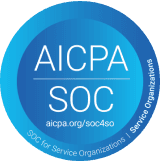WORKSHOP
•
SPANISH
6 hours
On-demand event. Date and location to be defined.
This event is a space where developers, architects, leaders, etc., can share and learn a little more about how, at Fluid Attacks, we have developed habits to achieve an agile and secure software development lifecycle. This workshop has two parts, one theoretical and one demonstrative, conducted by members of the Fluid Attacks engineering team.
Talk content
All this workshop is performed live over real infrastructure and applications, giving the audience a look into the backstage of the process: The tools used, the logs that allow us to identify issues, and even the source code that defines each step for the correct deployment of our applications, always focusing on how our infrastructure and products are updated in real-time.
These are the main topics and specific practices or habits that we discuss in the talk:
Daily value generation
Monorepo - A single management place
Microchanges - Small is simpler
Trunk-based development - Simple, scalable Git
Feature flags - No-excuses deployments
Horizontal - Transversal development
Fast and consistent feedback
Continuous Hacking - Security integrated to the SDLC
Intolerant Linters - Readable and maintainable code
Ephemeral environments - On-demand approved environments
Shift to the right - Test in production
Commit analytics - Software analytics
Immutability - Reproducibility at every level
Transparency - Trust generator
Repeatability
Everything as code - Change management
Versioned secrets - Traceable and maintainable secrets
Billing of materials - Software accounting
Federation - Rules of the game defined and enforced
Rollback - Deploying during office hours
It is possible to focus on the topics the participants deem most important, according to their needs or interests.
Experience
This workshop has been presented to professionals in technology and auditing areas for companies such as Accenture, Arus, ATH, Avianca, B89, Bancolombia, Banitsmo, BIVA, Cadena, Cidenet, Colpatria, Cognox, Coordiutil, Corona, EAFIT, Evendi Digital, F2X, GCO, Grupo AVAL, Grupo Éxito, Interbank, Komet Sales, Nutresa, Payválida, Protección, RUNT, Seti, Banco Pichincha, Soy Yo, BTG Pactual, Caja Cusco, Banco Azul, Sistecrédito, Banco Agromercantil, Bantrab, Telered, Virtualsoft, Linea Directa, OxxO, Chubb, Banco Bolivariano, ACH, Sodexo, Mutualser, Niubiz, Nequi, La Haus, Banco General Panamá, Yappy, MFTech, Banco Industrial, and Tech and Solve.






